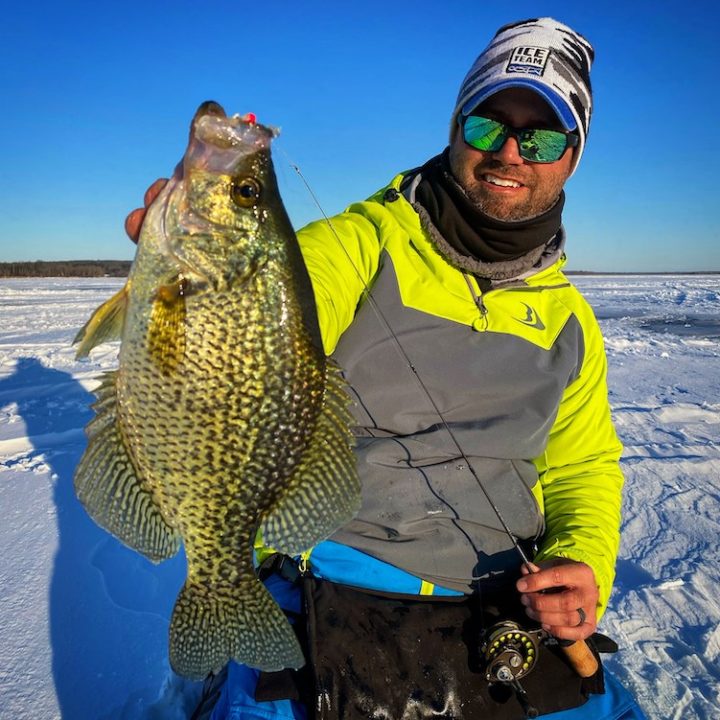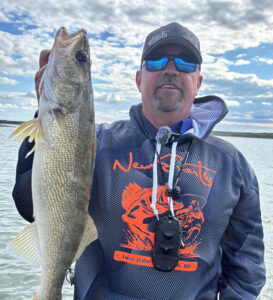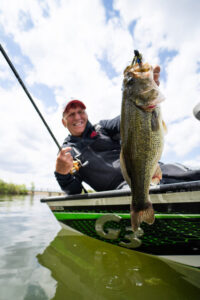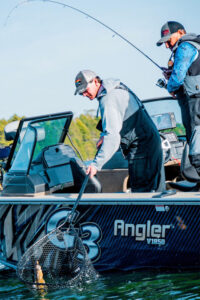ICE FISHING IDEAS
by Bob Jensen
Some friends found ice that was safe for ice fishing recently. These are hard-core ice anglers who, as soon as the ice is safe for walking, are walking on it. They’ve been after walleyes, crappies, and bluegills and have had success. In conversations with a couple of those anglers, I learned a few of their keys to success. Some of those keys are early ice things, others will help an angler catch more fish whenever they go ice fishing. Here we go.
John Crane was chasing bluegills on clear ice that was about 5 inches thick recently. The water under the ice was 5 to 7 feet deep. Some ice anglers wear creepers on the bottom of their boots to prevent slipping on the ice. J.C. doesn’t. He says that the noise created by the creepers can spook those shallow fish. If there’s snow on the ice, he walks on it. The snow allows an angler to move more quietly and also prevents fish below from seeing the movement. Not wearing creepers to avoid making noise might sound a bit extreme, but sometimes extreme measures create fish catches.
J.C. watches the Solunar Tables and the weather forecast very closely. He and many successful open water and ice anglers have a lot of confidence in them. John goes fishing whenever he can, but if he is limited to the time that he can spend on the ice, and if he can plan accordingly, he’ll be on his best spot before a major solunar period arrives and will fish through the major. By doing so, he is confident that his chances for fish catching are as good as they get.
When chasing bluegills, J.C. will usually start with a smaller Pinhead Pro spoon. He works it aggressively to start and keeps a very close eye on his sonar. The FLX-28 will show the smallest bait and will let an angler know if fish are present. If fish look but don’t eat, he slows the action on the Pinhead. If the fish continue to look but not eat, he’ll tie on a Drop Jig and tip it with something like a Maki or Jamei piece of plastic. ‘Gills will go for one of these offerings almost all of the time.
Matt Johnson is another guy who’s on the ice whenever the opportunity is there. Like Crane, Matt starts with an aggressive presentation. He too will start with a small Pinhead Pro or one the smaller Tikka Mino’s, and, like J.C., will go to a jig and plastic if the aggressive deal doesn’t work. Matt learned at a young age that bluegills under the ice would eat a jig tipped with plastic. In his youth, Matt liked to fish for largemouth bass, and he also liked to use plastic worms and creatures for those bass. When one of his plastic baits got chewed up by the bass to the point that it couldn’t be used any more, Matt put the chewed up bait in a bag and saved it for ice fishing. By the end of the open water bass season, he had a substantial bag of chewed up plastic. He would remove a small chunk from the bass bait and put it on his bluegill jig. He learned that the bluegills were very willing to eat the recycled bass bait. He doesn’t use chewed up bass plastics as much nowadays. He relies mostly on Maki plastics. These baits wiggle at the slightest twitch of the rod tip and resemble the bugs that panfish like to eat.
Johnson uses 2 or 3 pound test line for bluegills almost all of the time.
Whether you’re fishing through early, mid, or late ice these ideas will help you catch more fish throughout the entire ice fishing season. Give them a try. If you do, I’m betting that you’ll have more ice fishing success.





